Manganese-Labeled Alginate Hydrogels for Image-Guided Cell Transplantation
Abstract
1. Introduction
2. Results
- Standard (SD): 1.5% LVM (Low Viscosity Sodium Alginate) + 0.5% CaM (Calcium Alginate);
- Enhanced (EN): 1.5% LVM + 1% CaM;
- Standard + 10% CB (compact beads): 1.5% LVM + 0.5% CaM + 10% CB;
- Standard + 0.1 mM Mn: 1.5% LVM + 0.5% CaM + 0.1 mM MnCl2;
- Enhanced + 10% CB: 1.5% LVM + 1% CaM + 10% CB.
2.1. Rheology of LVM
2.2. Injectability Analysis of LVM
2.3. Permeability Analysis of LVM
2.4. Analysis of Morphology and Chemical Composition of LVM
2.5. In Vitro Studies
2.5.1. The Assessment of Compact Manganese Particle Impact on Human Adipose-Derived Stem Cells (hADSCs) Viability and Function
2.5.2. Cell Viability Assessment
2.5.3. Magnetic Resonance Imaging of LVM Hydrogel Phantoms
2.5.4. MR Imaging of Intrathecally Transplanted LVM Hydrogels
3. Discussion
4. Materials and Methods
4.1. Preparation of Mannitol and LVM Solutions, CaM Solution with Compact Manganese Alginate Particles or MnCl2, and aCSF Solution
4.2. Preparation of Alginate Hydrogels
4.3. Rheological Analysis
4.4. Injectability Analysis
4.4.1. Hamilton Syringe (31G)
4.4.2. Tuberculin Syringe (27G)
4.5. Permeability Analysis
4.6. Analysis of LVM Morphology and Chemical Composition
4.7. In Vitro Studies
4.7.1. Cell Culture
4.7.2. Compact Manganese Alginate Particles Toxicity Assessment
4.7.3. Encapsulation of hADSC Cells
4.7.4. Cell Viability Assessment
4.7.5. Magnetic Resonance Imaging of LVM Hydrogel Phantoms
4.8. In Vivo Studies
4.8.1. Intrathecal Transplantation of LVM Hydrogel
4.8.2. In Vivo MR Imaging
4.9. Statistical Analysis
5. Conclusions
Author Contributions
Funding
Institutional Review Board Statement
Informed Consent Statement
Data Availability Statement
Acknowledgments
Conflicts of Interest
References
- Philips, T.; Mironova, Y.A.; Jouroukhin, Y.; Chew, J.; Vidensky, S.; Farah, M.H.; Pletnikov, M.V.; Bergles, D.E.; Morrison, B.M.; Rothstein, J.D. MCT1 Deletion in Oligodendrocyte Lineage Cells Causes Late-Onset Hypomyelination and Axonal Degeneration. Cell Rep. 2021, 34, 108610. [Google Scholar] [CrossRef]
- Golubczyk, D.; Malysz-Cymborska, I.; Kalkowski, L.; Janowski, M.; Coates, J.R.; Wojtkiewicz, J.; Maksymowicz, W.; Walczak, P. The Role of Glia in Canine Degenerative Myelopathy: Relevance to Human Amyotrophic Lateral Sclerosis. Mol. Neurobiol. 2019, 56, 5740–5748. [Google Scholar] [CrossRef]
- Andrzejewska, A.; Lukomska, B.; Janowski, M. Concise Review: Mesenchymal Stem Cells: From Roots to Boost. Stem Cells 2019, 37, 855–864. [Google Scholar] [CrossRef] [PubMed]
- Bonafede, R.; Mariotti, R. ALS pathogenesis and therapeutic approaches: The role of mesenchymal stem cells and extracellular vesicles. Front. Cell. Neurosci. 2017, 11, 80. [Google Scholar] [CrossRef] [PubMed]
- Forostyak, S.; Sykova, E. Neuroprotective potential of cell-based therapies in ALS: From bench to bedside. Front. Neurosci. 2017, 11, 591. [Google Scholar] [CrossRef] [PubMed]
- Nowak, B.; Rogujski, P.; Janowski, M.; Lukomska, B.; Andrzejewska, A. Mesenchymal stem cells in glioblastoma therapy and progression: How one cell does it all. Biochim. Biophys. Acta—Rev. Cancer 2021, 1876, 188582. [Google Scholar] [CrossRef] [PubMed]
- Ciervo, Y.; Ning, K.; Jun, X.; Shaw, P.J.; Mead, R.J. Advances, challenges and future directions for stem cell therapy in amyotrophic lateral sclerosis. Mol. Neurodegener. 2017, 12, 1–22. [Google Scholar] [CrossRef]
- Andrzejewska, A.; Dabrowska, S.; Nowak, B.; Walczak, P.; Lukomska, B.; Janowski, M. Mesenchymal stem cells injected into carotid artery to target focal brain injury home to perivascular space. Theranostics 2020, 10, 6615–6628. [Google Scholar] [CrossRef] [PubMed]
- Guzman, R.; Janowski, M.; Walczak, P. Intra-Arterial Delivery of Cell Therapies for Stroke. Stroke 2018, 49, 1075–1082. [Google Scholar] [CrossRef]
- Malysz-Cymborska, I.; Golubczyk, D.; Kalkowski, L.; Kwiatkowska, J.; Zawadzki, M.; Głodek, J.; Holak, P.; Sanford, J.; Milewska, K.; Adamiak, Z.; et al. Intra-arterial transplantation of stem cells in large animals as a minimally-invasive strategy for the treatment of disseminated neurodegeneration. Sci. Rep. 2021, 11, 1–10. [Google Scholar] [CrossRef]
- Hached, F.; Vinatier, C.; Le Visage, C.; Gondé, H.; Guicheux, J.; Grimandi, G.; Billon-Chabaud, A. Biomaterial-assisted cell therapy in osteoarthritis: From mesenchymal stem cells to cell encapsulation. Best Pract. Res. Clin. Rheumatol. 2017, 31, 730–745. [Google Scholar] [CrossRef] [PubMed]
- Oliveira, J.M.; Carvalho, L.; Silva-Correia, J.; Vieira, S.; Majchrzak, M.; Lukomska, B.; Stanaszek, L.; Strymecka, P.; Malysz-Cymborska, I.; Golubczyk, D.; et al. Hydrogel-based scaffolds to support intrathecal stem cell transplantation as a gateway to the spinal cord: Clinical needs, biomaterials, and imaging technologies. NPJ Regen. Med. 2018, 3, 1–9. [Google Scholar] [CrossRef]
- Vieira, S.; Strymecka, P.; Stanaszek, L.; Silva-Correia, J.; Drela, K.; Fiedorowicz, M.; Malysz-Cymborska, I.; Rogujski, P.; Janowski, M.; Reis, R.L.; et al. Methacrylated gellan gum and hyaluronic acid hydrogel blends for image-guided neurointerventions. J. Mater. Chem. B 2020, 8, 5928–5937. [Google Scholar] [CrossRef] [PubMed]
- Wang, J.; Wang, H.; Ramsay, I.A.; Erstad, D.J.; Fuchs, B.C.; Tanabe, K.K.; Caravan, P.; Gale, E.M. Manganese-Based Contrast Agents for Magnetic Resonance Imaging of Liver Tumors: Structure-Activity Relationships and Lead Candidate Evaluation. J. Med. Chem. 2018, 61, 8811–8824. [Google Scholar] [CrossRef] [PubMed]
- Ciofani, G.; Raffa, V.; Pizzorusso, T.; Menciassi, A.; Dario, P. Characterization of an alginate-based drug delivery system for neurological applications. Med. Eng. Phys. 2008, 30, 848–855. [Google Scholar] [CrossRef] [PubMed]
- Rahmati, M.; Ehterami, A.; Saberani, R.; Abbaszadeh-Goudarzi, G.; Rezaei Kolarijani, N.; Khastar, H.; Garmabi, B.; Salehi, M. Improving sciatic nerve regeneration by using alginate/chitosan hydrogel containing berberine. Drug Deliv. Transl. Res. 2020, 11, 1983–1993. [Google Scholar] [CrossRef]
- Manzari-Tavakoli, A.; Tarasi, R.; Sedghi, R.; Moghimi, A.; Niknejad, H. Fabrication of nanochitosan incorporated polypyrrole/alginate conducting scaffold for neural tissue engineering. Sci. Rep. 2020, 10, 1–10. [Google Scholar] [CrossRef]
- Totten, J.D.; Alhadrami, H.A.; Jiffri, E.H.; McMullen, C.J.; Seib, F.P.; Carswell, H.V.O. Towards clinical translation of ‘second-generation’ regenerative stroke therapies: Hydrogels as game changers? Trends Biotechnol. 2021. [Google Scholar] [CrossRef] [PubMed]
- Levit, R.D.; Landázuri, N.; Phelps, E.A.; Brown, M.E.; García, A.J.; Davis, M.E.; Joseph, G.; Long, R.; Safley, S.A.; Suever, J.D.; et al. Cellular encapsulation enhances cardiac repair. J. Am. Heart Assoc. 2013, 2, e000367. [Google Scholar] [CrossRef] [PubMed]
- Allen, A.B.; Gazit, Z.; Su, S.; Stevens, H.Y.; Guldberg, R.E. In vivo bioluminescent tracking of mesenchymal stem cells within large hydrogel constructs. Tissue Eng.—Part C Methods 2014, 20, 806–816. [Google Scholar] [CrossRef]
- Hosseini, S.M.; Sharafkhah, A.; Koohi-Hosseinabadi, O.; Semsar-Kazerooni, M. Transplantation of neural stem cells cultured in alginate scaffold for spinal cord injury in rats. Asian Spine J. 2016, 10, 611–618. [Google Scholar] [CrossRef] [PubMed]
- Abasalizadeh, F.; Moghaddam, S.V.; Alizadeh, E.; Akbari, E.; Kashani, E.; Fazljou, S.M.B.; Torbati, M.; Akbarzadeh, A. Alginate-based hydrogels as drug delivery vehicles in cancer treatment and their applications in wound dressing and 3D bioprinting. J. Biol. Eng. 2020, 14, 1–22. [Google Scholar] [CrossRef]
- Kalkowski, L.; Golubczyk, D.; Kwiatkowska, J.; Holak, P.; Milewska, K.; Janowski, M.; Oliveira, J.M.; Walczak, P.; Malysz-Cymborska, I. Two in One: Use of Divalent Manganese Ions as Both Cross-Linking and MRI Contrast Agent for Intrathecal Injection of Hydrogel-Embedded Stem Cells. Pharmaceutics 2021, 13, 1076. [Google Scholar] [CrossRef] [PubMed]
- Golmohamadi, M.; Wilkinson, K.J. Diffusion of ions in a calcium alginate hydrogel-structure is the primary factor controlling diffusion. Carbohydr. Polym. 2013, 94, 82–87. [Google Scholar] [CrossRef]
- Sarker, M.; Izadifar, M.; Schreyer, D.; Chen, X. Influence of ionic crosslinkers (Ca2+/Ba2+/Zn2+) on the mechanical and biological properties of 3D Bioplotted Hydrogel Scaffolds. J. Biomater. Sci. Polym. Ed. 2018, 29, 1126–1154. [Google Scholar] [CrossRef] [PubMed]
- Naghieh, S.; Karamooz-Ravari, M.R.; Sarker, M.D.; Karki, E.; Chen, X. Influence of crosslinking on the mechanical behavior of 3D printed alginate scaffolds: Experimental and numerical approaches. J. Mech. Behav. Biomed. Mater. 2018, 80, 111–118. [Google Scholar] [CrossRef] [PubMed]
- Cao, N.; Chen, X.B.; Schreyer, D.J. Influence of Calcium Ions on Cell Survival and Proliferation in the Context of an Alginate Hydrogel. ISRN Chem. Eng. 2012, 2012, 1–9. [Google Scholar] [CrossRef]
- Lukomska, B.; Stanaszek, L.; Zuba-Surma, E.; Legosz, P.; Sarzynska, S.; Drela, K. Challenges and Controversies in Human Mesenchymal Stem Cell Therapy. Stem Cells Int. 2019, 2019, 9628536. [Google Scholar] [CrossRef] [PubMed]
- Gugliandolo, A.; Bramanti, P.; Mazzon, E. Mesenchymal stem cells: A potential therapeutic approach for amyotrophic lateral sclerosis? Stem Cells Int. 2019, 2019, 3675627. [Google Scholar] [CrossRef] [PubMed]
- Nita, L.E.; Chiriac, A.P.; Ghilan, A.; Rusu, A.G.; Tudorachi, N.; Timpu, D. Alginate enriched with phytic acid for hydrogels preparation. Int. J. Biol. Macromol. 2021, 181, 561–571. [Google Scholar] [CrossRef] [PubMed]
- Distler, T.; Lauria, I.; Detsch, R.; Sauter, C.M.; Bendt, F.; Kapr, J.; Rütten, S.; Boccaccini, A.R.; Fritsche, E. Neuronal Differentiation from Induced Pluripotent Stem Cell-Derived Neurospheres by the Application of Oxidized Alginate-Gelatin-Laminin Hydrogels. Biomedicines 2021, 9, 261. [Google Scholar] [CrossRef]
- Silva, A.C.; Bock, N.A. Manganese-Enhanced MRI: An Exceptional Tool in Translational Neuroimaging. Schizophr. Bull. 2007, 34, 595–604. [Google Scholar] [CrossRef]
- Bock, N.A.; Paiva, F.F.; Silva, A.C. Fractionated Manganese-Enhanced Magnetic Resonance Imaging. NMR Biomed. 2008, 21, 473. [Google Scholar] [CrossRef]
- Tambalo, S.; Daducci, A.; Fiorini, S.; Boschi, F.; Mariani, M.; Marinone, M.; Sbarbati, A.; Marzola, P. Experimental protocol for activation-induced manganese-enhanced MRI (AIM-MRI) based on quantitative determination of Mn content in rat brain by fast T1 mapping. Magn. Reson. Med. 2009, 62, 1080–1084. [Google Scholar] [CrossRef] [PubMed]
- Ding, D.; Roth, J.; Salvi, R. Manganese is toxic to spiral ganglion neurons and hair cells in vitro. Neurotoxicology 2011, 32, 233–241. [Google Scholar] [CrossRef]
- Drela, K.; Stanaszek, L.; Nowakowski, A.; Kuczynska, Z.; Lukomska, B. Experimental strategies of mesenchymal stem cell propagation: Adverse events and potential risk of functional changes. Stem Cells Int. 2019, 2019, 7012692. [Google Scholar] [CrossRef]
- Bogdanova-Jatniece, A.; Berzins, U.; Kozlovska, T. Growth properties and pluripotency marker expression of spontaneously formed thre-dimensional aggregates of human adipose-derived stem cells. Int. J. Stem Cells 2014, 7, 143–152. [Google Scholar] [CrossRef][Green Version]
- Nikolits, I.; Nebel, S.; Egger, D.; Kreß, S.; Kasper, C. Towards Physiologic Culture Approaches to Improve Standard Cultivation of Mesenchymal Stem Cells. Cells 2021, 10, 886. [Google Scholar] [CrossRef]
- Liu, C.H.; D’Arceuil, H.E.; De Crespigny, A.J. Direct CSF Injection of MnCl2 for Dynamic Manganese-Enhanced MRI. Magn. Reson. Med. 2004, 51, 978–987. [Google Scholar] [CrossRef] [PubMed]
- Cha, M.; Lee, K.; Won, J.S.; Lee, B.H. Manganese-enhanced magnetic resonance imaging of the spinal cord in rats with formalin-induced pain. Neurosci. Res. 2019, 149, 14–21. [Google Scholar] [CrossRef]
- Janowski, M.; Kuzma-Kozakiewicz, M.; Binder, D.; Habisch, H.J.; Habich, A.; Lukomska, B.; Domanska-Janik, K.; Ludolph, A.C.; Storch, A. Neurotransplantation in mice: The concorde-like position ensures minimal cell leakage and widespread distribution of cells transplanted into the cisterna magna. Neurosci. Lett. 2008, 430, 169–174. [Google Scholar] [CrossRef] [PubMed]
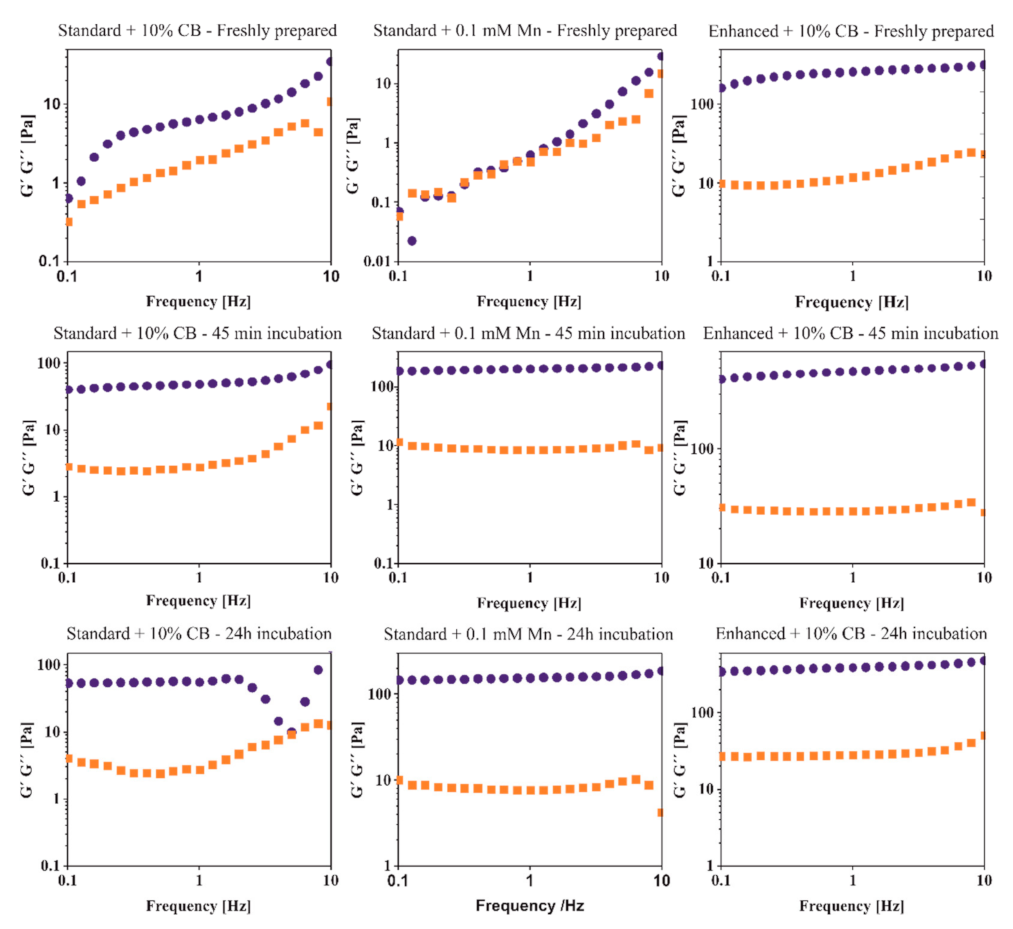
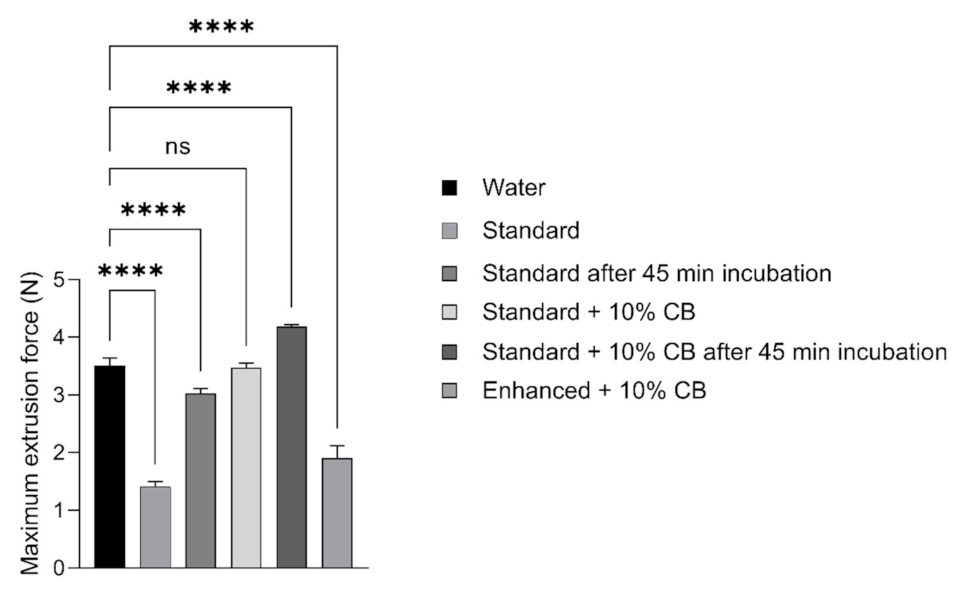
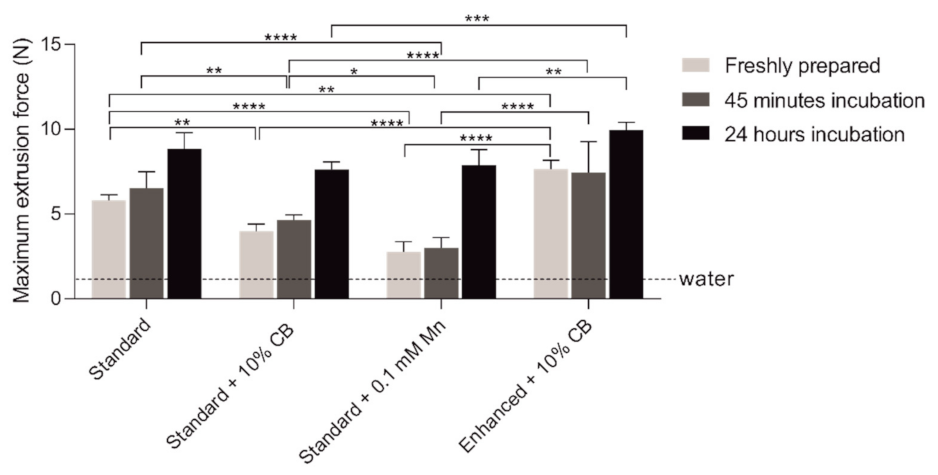
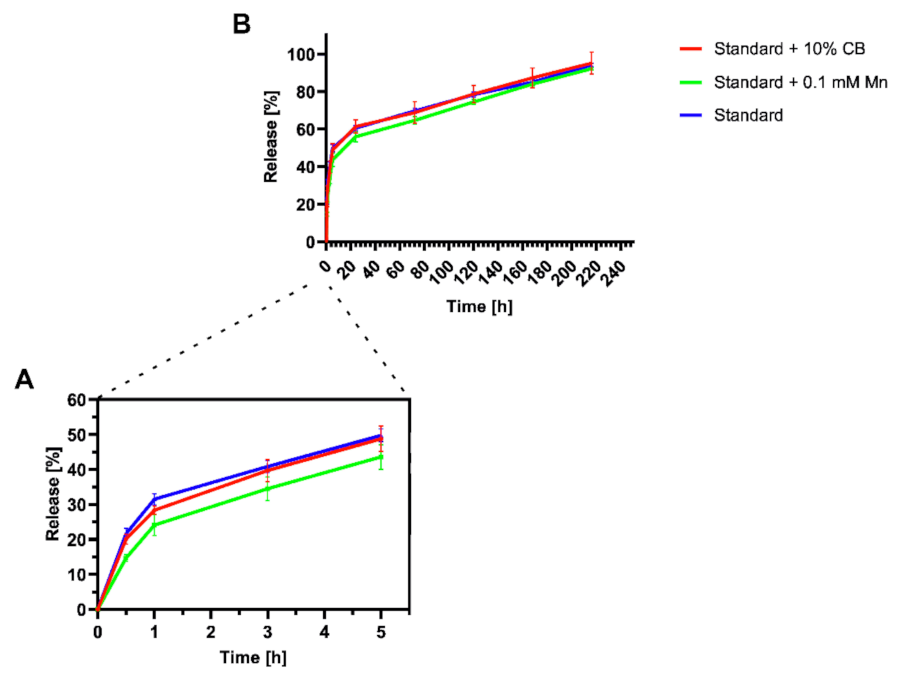
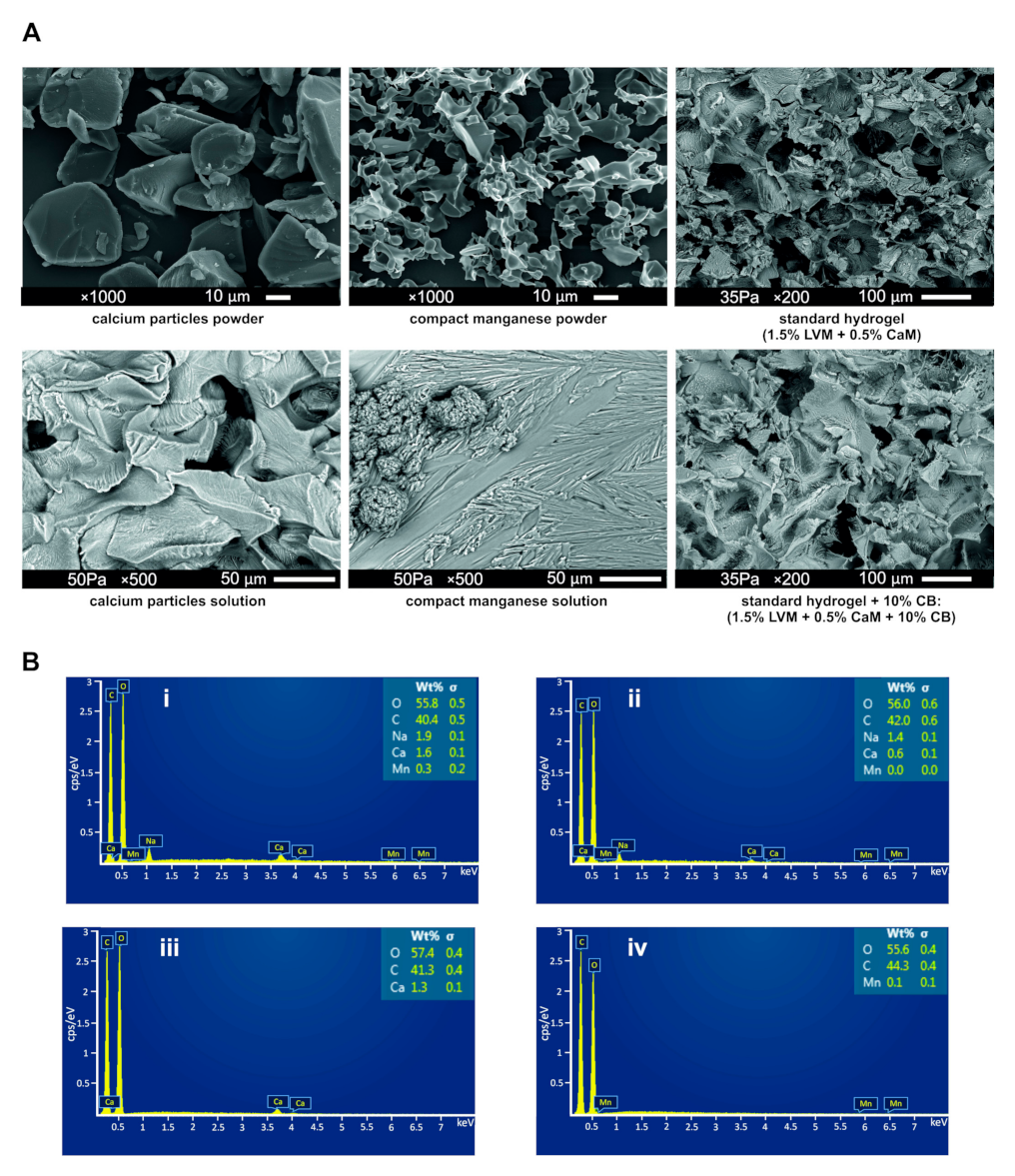
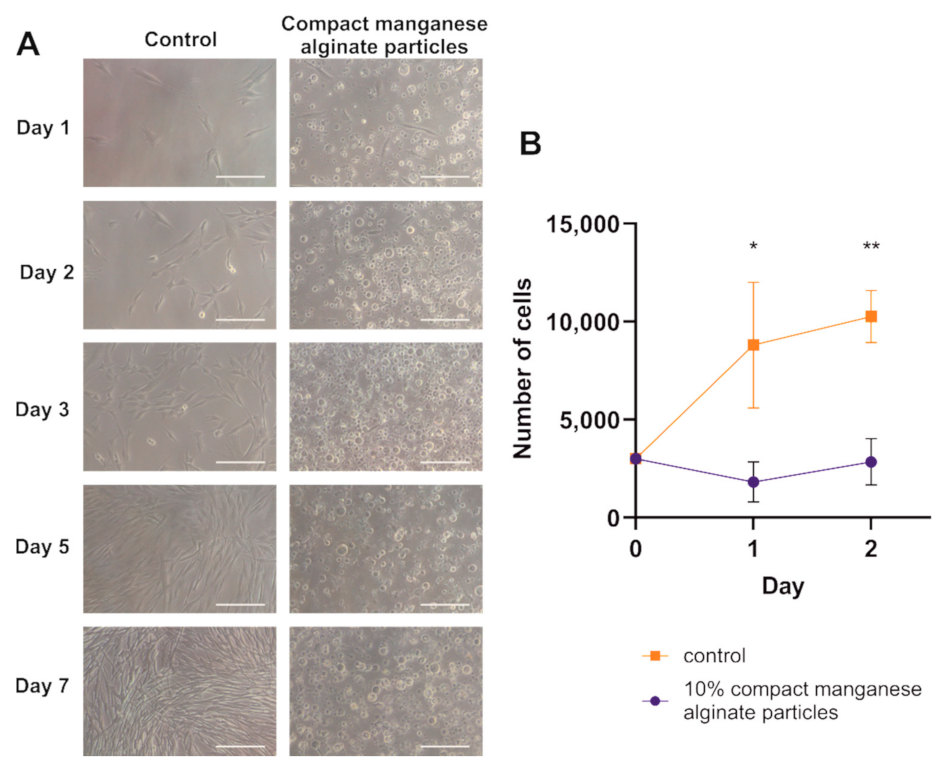
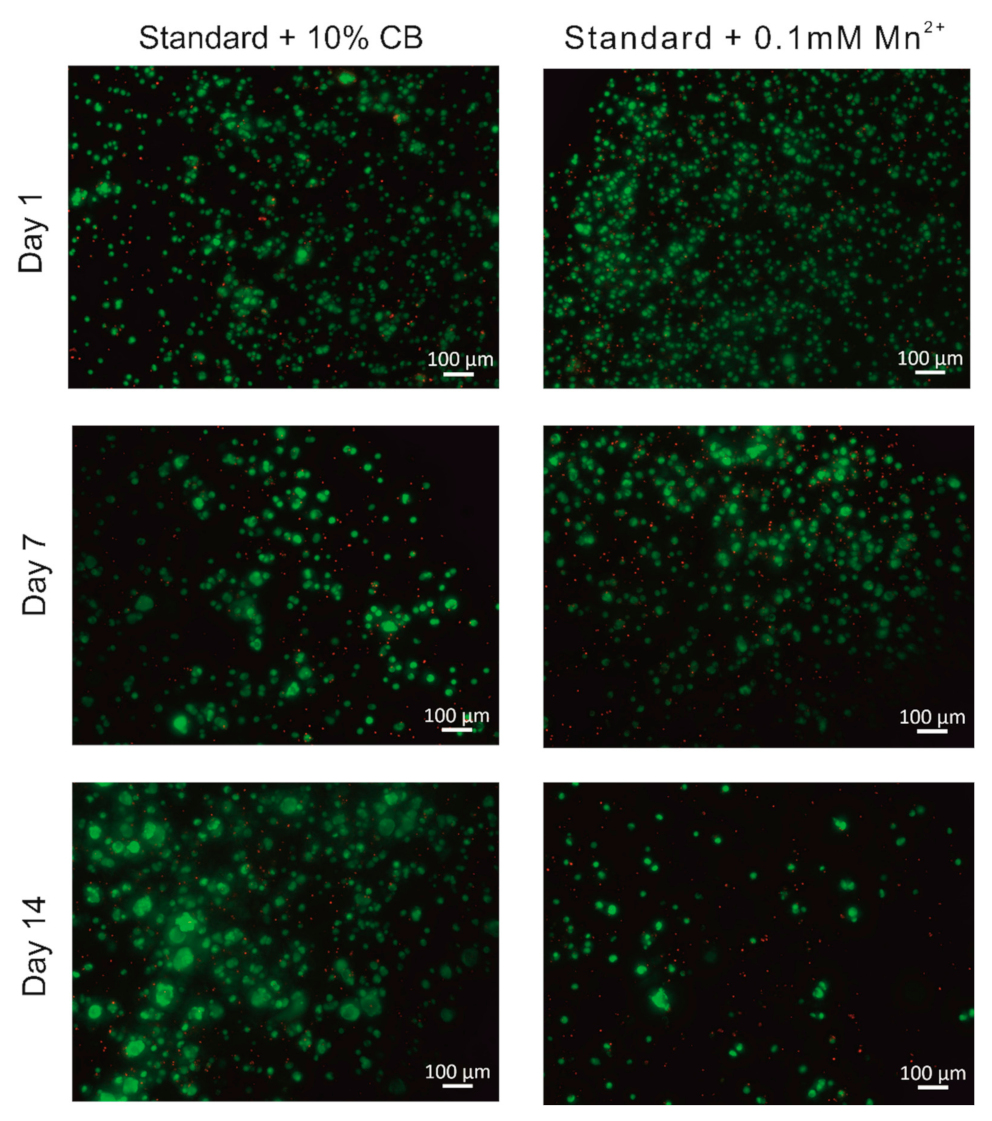
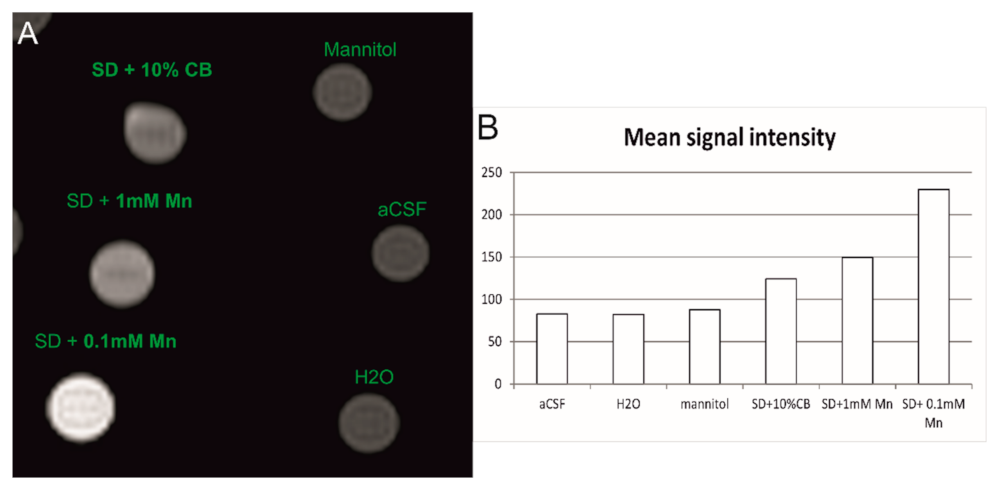

Publisher’s Note: MDPI stays neutral with regard to jurisdictional claims in published maps and institutional affiliations. |
© 2022 by the authors. Licensee MDPI, Basel, Switzerland. This article is an open access article distributed under the terms and conditions of the Creative Commons Attribution (CC BY) license (https://creativecommons.org/licenses/by/4.0/).
Share and Cite
Araszkiewicz, A.M.; Oliveira, E.P.; Svendsen, T.; Drela, K.; Rogujski, P.; Malysz-Cymborska, I.; Fiedorowicz, M.; Reis, R.L.; Oliveira, J.M.; Walczak, P.; et al. Manganese-Labeled Alginate Hydrogels for Image-Guided Cell Transplantation. Int. J. Mol. Sci. 2022, 23, 2465. https://doi.org/10.3390/ijms23052465
Araszkiewicz AM, Oliveira EP, Svendsen T, Drela K, Rogujski P, Malysz-Cymborska I, Fiedorowicz M, Reis RL, Oliveira JM, Walczak P, et al. Manganese-Labeled Alginate Hydrogels for Image-Guided Cell Transplantation. International Journal of Molecular Sciences. 2022; 23(5):2465. https://doi.org/10.3390/ijms23052465
Chicago/Turabian StyleAraszkiewicz, Antonina M., Eduarda P. Oliveira, Terje Svendsen, Katarzyna Drela, Piotr Rogujski, Izabela Malysz-Cymborska, Michal Fiedorowicz, Rui L. Reis, Joaquim Miguel Oliveira, Piotr Walczak, and et al. 2022. "Manganese-Labeled Alginate Hydrogels for Image-Guided Cell Transplantation" International Journal of Molecular Sciences 23, no. 5: 2465. https://doi.org/10.3390/ijms23052465
APA StyleAraszkiewicz, A. M., Oliveira, E. P., Svendsen, T., Drela, K., Rogujski, P., Malysz-Cymborska, I., Fiedorowicz, M., Reis, R. L., Oliveira, J. M., Walczak, P., Janowski, M., Lukomska, B., & Stanaszek, L. (2022). Manganese-Labeled Alginate Hydrogels for Image-Guided Cell Transplantation. International Journal of Molecular Sciences, 23(5), 2465. https://doi.org/10.3390/ijms23052465










